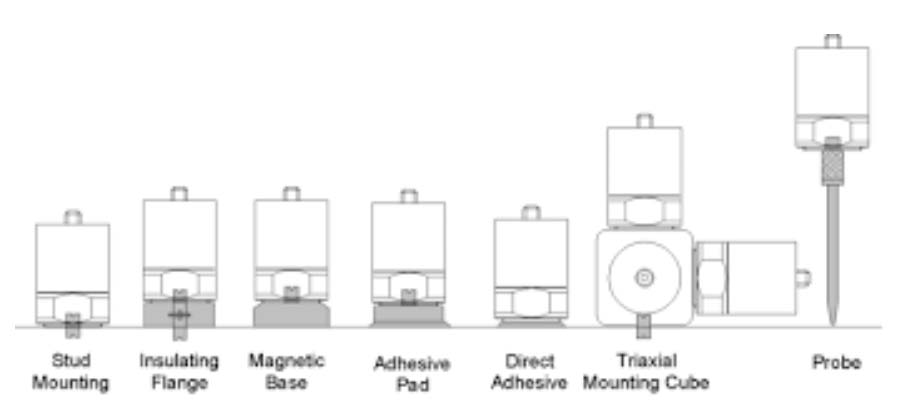Which Machines Need Monitoring?
When deciding which machines to monitor, critical machines should be given priority over other machines. This is much the same as monitoring the health of people. It is inappropriate to closely monitor the health of perfectly healthy people, and then to forsake the monitoring of others who genuinely need it. The same applies when monitoring the condition of machines.
In general, the following critical types of machines should be monitored on a regular basis to avoid unexpected and costly problems:
(a) Machines that require expensive, lengthy, or difficult repairs if broken down
(b) Machines that are critical to production or general plant operations
(c) Machines that are known to frequently suffer damage
(d) Machines that are being evaluated for their reliability
(e) Machines that affect human or environmental safety
How Does the Instrument Work?
Accelerometers have always been a popular choice for rotating machinery vibration monitoring. They are a rugged, compact, light weight transducer with a wide frequency response range. This transducer is typically attached to the outer surface of machinery. Generally, this machinery will have parts that generate high frequency signals, such as, rolling element bearings or gear sets.
There are three mounting methods typically used for monitoring applications: bolt mounting, glue, and magnets

Depending on the user’s choice, the signal can be displayed as either a velocity waveform or a velocity spectrum. A velocity spectrum is derived from a velocity waveform by means of a mathematical calculation known as the Fast Fourier Transform or FFT.
What is location of measurement?
Most machines involve rotary mechanisms. Motors, pumps, compressors, fans, belt conveyors, gearboxes, all involve rotary mechanisms and are frequently used in machines.
Vibration measurements are thus usually taken at the bearings of machines, with accelerometers mounted at or near the bearings. It is important to always remember that the way in which we mount the accelerometer very much determines the accuracy of measurements.
How should accelerometers be mounted to ensure measurements are accurate and how can we do so safely? Here are some guidelines:
(a) Mount as Close as Possible to the Bearing

(b) Make Sure the Accelerometer is Firmly Attached or on magnet is seating properly

(c) Make Sure the Accelerometer is Oriented Correctly

(d) Mount the Accelerometer in the Same Location & Stable surface.

(e) Safety first -While taking measurements there are three kinds of hazards stand out in likelihood or severity: injury by moving parts, electrical shock, and magnet- induced damage.
Setup and the Data Collection
The parameters that determine how much or how fast data is collected are the parameters ‘Fmax’, ‘Spectral lines’, and ‘Overlap percentage’. The waveform data is collected and mathematically converted using Fast fourier transform and FFT spectrum data is used for analysis.
For FFT Data- Fmax must be set/Frequency range, Total no of lines/resolution of the spectrum. This also determines the quality of data and time taken for the measurement.
Fmax setting is based on the speed of the machine, higher the speed higher the Fmax; For vibration such as gear teeth, fan blades, pump vanes, and the setting is based on data of minimum 4 times to be collected.
‘Linear’ averaging is recommended for most cases The parameter ‘Number of averages’ determines the number of consecutive spectra used for averaging.
There are two amplitude types – peak amplitude and rms amplitude. For trending and as per ISO for comparison and verifying as per standards rms is preferred.
FFT Spectrum

ROTOR Scope
Emergency Vibration Data collection and reporting.
Outsourced Vibration diagnostic Annual maintenance contracts.
Remote monitoring and reporting.
Manpower Supply of Technically specialist Condition monitoring engineer
Product Sale and Services
Trainings.

